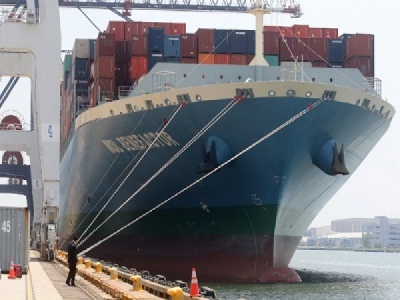
Posted on July 14, 2016
By Pete Kasperowicz, Washington Examiner
The $5 billion project to expand the Panama Canal won’t deliver the expected economic boost to the U.S. until East Coast ports are expanded to handle the larger “Post-Panamax” container vessels, importers and retail groups are warning.
According to major industry groups, just a handful of ports on the East Coast are ready to take the new ships, such as Baltimore, Norfolk Virginia, and Miami.
The answer, they say, is a push to dredge other ports in the Gulf of Mexico and East Coast.
“Just days ago, Post-Panamax container ships began transiting the Panama Canal,” several groups wrote in a letter to the Obama administration last week (read it below). “With only a few exceptions, they will not be able to call on East Coast and Gulf Coast ports due to a lack of sufficient channel depths and widths.”
“The estimated 10-15 percent transportation cost savings promised by the Panama Canal project will not be realized, and the economic spur to U.S. ports from adding shipping lines will be delayed,” they added.
But it’s not simply a matter of spending money. There are complicated legal and logistical hurdles in the way of rapidly expanding the capacity of East Coast ports.
Signatories to the industry letter see it as a trade issue — the letter was sent to U.S. Trade Representative Michael Froman.
Nate Herman, senior vice president for the American Apparel & Footwear Association, notes that the Foreign Dredge Act of 1906 says only U.S. owned and operated companies can do dredging work in U.S. coastal waters. That’s a real hurdle, because U.S. companies alone don’t have the capacity to do the work.
Herman says the Transatlantic Trade and Investment Partnership, or TTIP, is a chance to open up the U.S. market to European dredgers, who could help more quickly widen U.S. ports.
“You have world class ports in Europe, and that’s because they have the capacity,” he said. “They have the equipment and know-how to do it well and efficiently.”
Other industry groups on the letter to USTR agree. “We urge you to secure a market-opening agreement on dredging that removes current market distortions and thereby creates a win-win-win — for U.S. jobs, for infrastructure, and for the environment,” they told Froman.
Herman and others note the U.S. is already several years behind schedule. The Panama Canal expansion was already a few years behind schedule, and only the New York-New Jersey port is taking steps to expand. One problem is the Bayonne Bridge, which is too low — authorities are spending $1.3 billion to raise it.
But because the TTIP has stalled, some say the U.S. shouldn’t wait for it in the hopes it opens up the U.S. dredging market to non-U.S. companies.
That would require Congress working on its own to change the 1906 law, which would require Congress to recognize the need and then find the time to act. It seems unlikely, given how little time there is before Congress leaves to campaign, and the ongoing inability of members to agree on much.
Allowing non-U.S. companies to compete for work in the U.S. is also something that typically happens as part of a trade deal, which means it might have to wait for the TTIP, or perhaps a growing recognition that the bigger ships are simply bypassing the smaller ports.
In the meantime, the Obama administration seems keenly aware that while the larger Panama Canal holds the promise for a bigger economic boost, it’s still just a promise for many parts of the U.S.
“If you want to see the eighth wonder of the world, go down and see the two new locks of the Panama Canal,” Vice President Joe Biden said in June. “Yet there’s only three ports from the Gulf to Maine that can accommodate these new Super Panamax ships.”
Source: Washington Examiner





